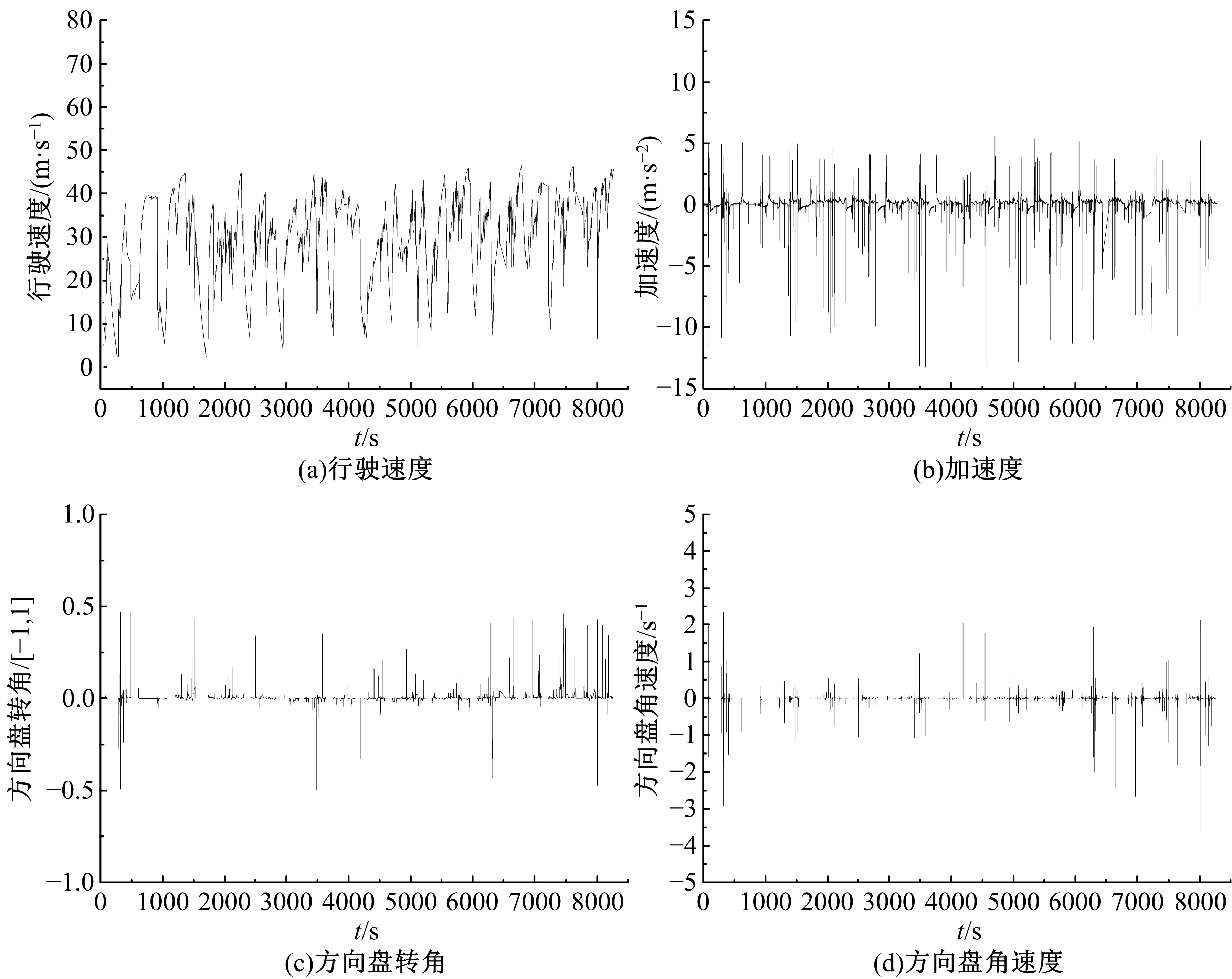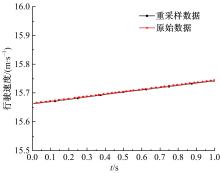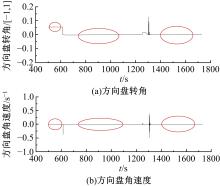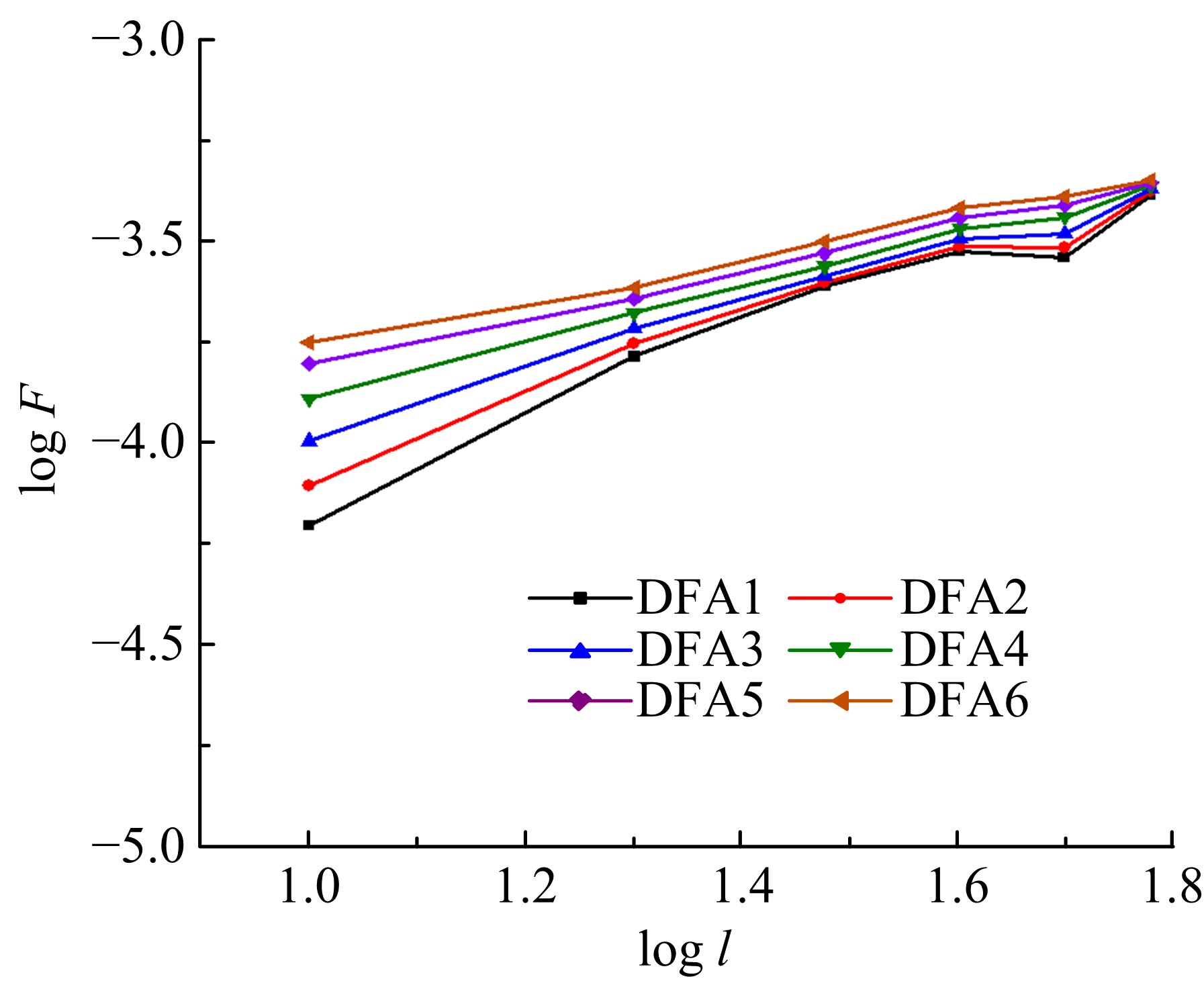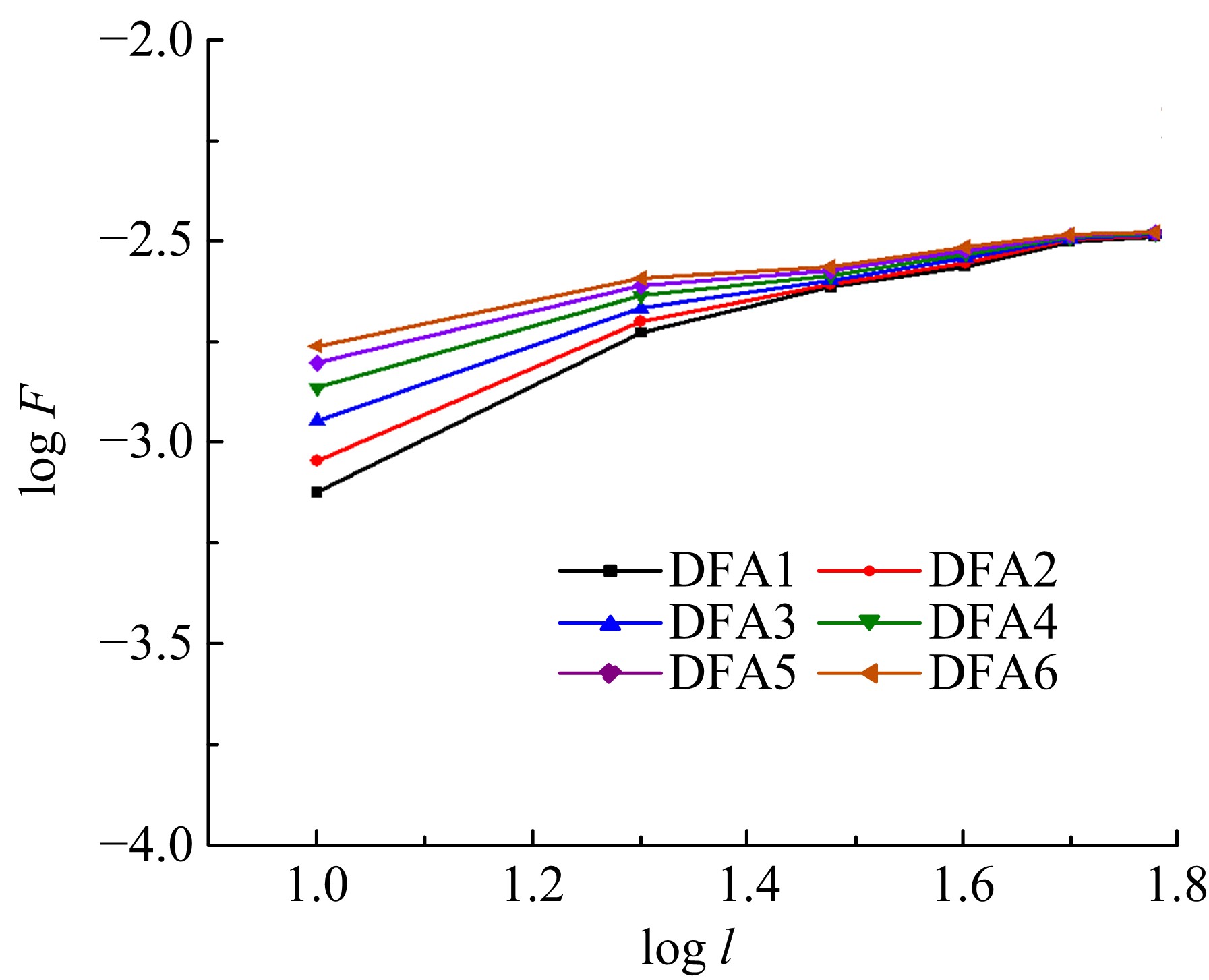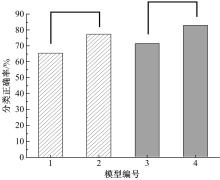Journal of Jilin University(Engineering and Technology Edition) ›› 2021, Vol. 51 ›› Issue (2): 557-564.doi: 10.13229/j.cnki.jdxbgxb20200061
Application of multi⁃fractal features of driving performance in driver fatigue detection
Shu-wei ZHANG( ),Zhong-yin GUO(
),Zhong-yin GUO( ),Zhen YANG,Ben-min LIU
),Zhen YANG,Ben-min LIU
- The Key Laboratory of Road and Traffic Engineering,Ministry of Education,Tongji University,Shanghai 201804,China
CLC Number:
- U492.8
| 1 | 裴玉龙, 马艳丽.疲劳对驾驶员感知判断及操作特性的影响[J]. 吉林大学学报: 工学版, 2009, 39(5) : 1151-1156. |
| Pei Yu-long, Ma Yan-li. The effect of fatigue on driver's perception and operating characteristics [J]. Journal of Jilin University (Engineering and Technology Edition), 2009, 39(5): 1151-1156. | |
| 2 | Phillips R O, Kecklund G, Anund A, et al. Fatigue in transport: a review of exposure, risks, checks and controls[J]. Transport Reviews, 2017, 37(6):742-766. |
| 3 | 毛科俊, 赵晓华, 房瑞雪, 等. 驾驶疲劳声音对策有效性的驾驶模拟[J]. 吉林大学学报: 工学版, 2010, 40(6) : 1533-1537. |
| Mao Ke-jun, Zhao Xiao-hua, Fang Rui-xue, et al. Driving simulation of the effectiveness of driving fatigue sound countermeasures [J]. Journal of Jilin University (Engineering and Technology Edition), 2010, 40(6): 1533-1537. | |
| 4 | Ting P H, Hwang J R, Doong J L, et al. Driver fatigue and highway driving: a simulator study[J]. Physiology & Behavior, 2008, 94(3): 448-453. |
| 5 | 毛喆. 基于驾驶员生理特征分析的驾驶疲劳状态识别方法研究[D]. 武汉: 武汉理工大学计算机科学与技术学院, 2006. |
| Mao Zhe. Study on the recognition method of driving fatigue state based on the analysis of driver physiological characteristics[D]. Wuhan: School of Computer Science and Technology, Wuhan University of Technology, 2006. | |
| 6 | 黄皓. 基于驾驶操作及车辆状态的疲劳驾驶行为检测研究[D]. 南京: 东南大学交通学院, 2016. |
| Huang Hao. Research on fatigue driving behavior detection based on driving operation and vehicle status[D]. Nanjing: College of Transportation, Southeast University, 2016. | |
| 7 | 张晖. 基于驾驶行为的疲劳状态识别研究[D]. 武汉: 武汉理工大学能源与动力工程学院, 2009. |
| Zhang Hui. Research on fatigue state recognition based on driving behavior[D]. Wuhan: School of Energy and Power Engineering, Wuhan University of Technology, 2009. | |
| 8 | 吴超仲, 张晖, 毛喆, 等. 基于驾驶操作行为的驾驶员疲劳状态识别模型研究[J]. 中国安全科学学报, 2007, 17(4): 162-165. |
| Wu Chao-zhong, Zhang Hui, Mao Zhe, et al. Research on driver fatigue recognition model based on driving operation behavior[J]. Chinese Journal of Safety Science, 2007, 17(4): 162-165. | |
| 9 | 胥川, 裴赛君, 王雪松. 基于无侵入测量指标的个体差异化驾驶疲劳检测[J]. 中国公路学报, 2016, 29(10): 118-125. |
| Xu Chuan, Pei Sai-jun, Wang Xue-song. Individual differential driving fatigue detection based on non-intrusive measurement index[J]. China Journal of Highway and Transport, 2016, 29(10): 118-125. | |
| 10 | 金雪. 基于驾驶行为的疲劳驾驶检测方法研究[D]. 北京: 北京工业大学城市交通学院, 2015. |
| Jin Xue. Research on fatigue driving detection method based on driving behavior[D]. Beijing: School of Urban Transportation, Beijing University of Technology, 2015. | |
| 11 | 李兆飞, 柴毅, 李华锋. 多重分形去趋势波动分析的振动信号故障诊断[J]. 华中科技大学学报: 自然科学版, 2012, 40(12) : 5-9, 17. |
| Li Zhao-fei, Chai Yi, Li Hua-feng. Fault diagnosis of vibration signals based on multi-fractal detrending wave analysis[J]. Journal of Huazhong University of Science and Technology (Natural Science Edition),2012, 40(12): 5-9, 17. | |
| 12 | 胡江, 苏怀智, 马福恒, 等. MF-DFA在大坝安全监测序列分析和整体性态识别中的应用[J]. 水利水电科技进展, 2014, 34(3): 50-55. |
| Hu Jiang, Su Huai-zhi, Ma Fu-heng, et al. Application of MF-DFA in dam safety monitoring sequence analysis and overall behavior identification[J]. Advances in Science and Technology of Water Resources and Hydropower, 2014, 34(3): 50-55. | |
| 13 | Peng C K, Havlin S, Stanley H E, et al. Quantification of scaling exponents and crossover phenomena in nonstationary heartbeat time series[J]. Chaos, 1995, 5(1): 82-87. |
| 14 | Kantelhardt J W, Zschiegner S A, Braun P, et al. Multifratal detrended fluctuation analysis of nonstationary time series[J]. Physica A: Statistical Mechanics and its Applications, 2002, 316(1-4):87-114. |
| 15 | Larue G S, Rakotonirainy A, Pettitt A N. Driving performance impairment due to hypovigilance on monotonous roads[J]. Accident Analysis and Prevention, 2011, 43(6): 2037-2046. |
| 16 | Åkerstedt T, Gillberg M. Subjective and objective sleepiness in the active individual[J]. International Journal of Neuroscience, 1990, 52(1/2): 29-37. |
| 17 | Ingre M, Akersted T, Peters B, et al. Subjective sleepiness, simulated driving performance and blink duration: examining individual differences[J]. Journal of Sleep Research, 2006, 15(1): 47-53. |
| 18 | Baccarini L M R, Rocha e Silva V V, de Menezes B R, et al. SVM practical industrial application for mechanical faults diagnostic[J].Expert Systems with Applications, 2011, 38(6): 6980-6984. |
| 19 | 谢宏, 杨硕富, 夏斌, 等. 基于支持向量机的驾驶疲劳脑电特征递增选择算法研究[J]. 生物医学工程学杂志, 2013, 30(6): 1321-1325. |
| Xie Hong, Yang Shuo-fu, Xia Bin, et al. Research on incremental selection algorithm of EEG features in driving fatigue based on support vector machine[J]. Journal of Biomedical Engineering, 2013, 30(6): 1321-1325. | |
| 20 | 王振华, 贾银山, 陈兴. 基于SVM的驾驶员疲劳检测研究[J]. 科学技术与工程, 2011(8): 1828-1832. |
| Wang Zhen-hua, Jia Yin-shan, Chen Xing. Research on driver fatigue detection based on SVM[J]. Science Technology and Engineering, 2011(8): 1828-1832. | |
| 21 | 王琳虹, 李世武, 高振海, 等. 基于粒子群优化与支持向量机的驾驶员疲劳等级判别[J]. 哈尔滨工业大学学报, 2014, 46(12): 102-107. |
| Wang Lin-hong, Li Shi-wu, Gao Zhen-hai, et al. Discrimination of driver fatigue level based on particle swarm optimization and support vector machine[J]. Journal of Harbin Institute of Technology, 2014, 46(12): 102-107. |
| [1] | Jian-ming LING,Hui CHEN,Jin-song QIAN,Ding ZHOU. Dynamic resilient modulus for unsaturated clay soils considering effect of limited moisture content fluctuation [J]. Journal of Jilin University(Engineering and Technology Edition), 2020, 50(2): 613-620. |
| [2] | Ping WAN,Chao-zhong WU,Xiao-feng MA. Discriminating threshold of driving anger intensity based on driving behavior features by ROC curve analysis [J]. Journal of Jilin University(Engineering and Technology Edition), 2020, 50(1): 121-131. |
| [3] | XU Jin, CHEN Wei, ZHOU Jia, LUO Xiao, SHAO Yi-ming. Correlation between steering and driver's workload [J]. 吉林大学学报(工学版), 2017, 47(2): 438-445. |
| [4] | WANG Hai-wei, WEN Hui-ying, LIU Min. Experimental evaluation of nighttime driver's physiological characteristics in driving simulator [J]. 吉林大学学报(工学版), 2017, 47(2): 420-428. |
| [5] | YAN Li-xin, HUANG Zhen, ZHU Dun-yao, CHEN Zhi-jun, RAN Bin. Driving risk status identification based on Markov blanket hidden Naive Bayes [J]. 吉林大学学报(工学版), 2016, 46(6): 1851-1857. |
| [6] | FU Rui, MA Yong, GUO Ying-shi, YUAN Wei, SUN Hao. Lane change warning rules based on real vehicle test data [J]. 吉林大学学报(工学版), 2015, 45(2): 379-388. |
| [7] | LI Zhi-bin, LIU Pan, JIN Mao-jing, XU Cheng-cheng. Real-time prediction of rear-end crashes near freeway recurrent bottlenecks [J]. 吉林大学学报(工学版), 2013, 43(06): 1482-1487. |
| [8] | LIAO Jun-hong, SHAO Chun-fu, WU Hong-bo, SUN Yi-xuan, WANG Shu-ling. Calculation and assessment technique of highway 3D dynamic sight distance [J]. 吉林大学学报(工学版), 2013, 43(03): 640-645. |
| [9] | GAO Lü-he, TIAN Jing-jing, LI Shi-wu, SUN Wen-cai. Fuzzy comprehensive assessment model of vehicle safety states based on fault tree analysis [J]. 吉林大学学报(工学版), 2011, 41(增刊1): 95-100. |
| [10] | YANG Zhi-Fa, YU Zhuo, GUAN Xin, LI Shi-Wu. Simulation model of road landscape impact on traffic safety [J]. 吉林大学学报(工学版), 2010, 40(增刊): 179-0182. |
| [11] | LI Xian-Sheng, REN Wan-Wan, XI Jian-Feng, ZUO Shu-Xia. Driver's speedcontrol model based on nonmadatory speedcontrol facilities [J]. 吉林大学学报(工学版), 2010, 40(增刊): 169-0173. |
| [12] | MA She-qiang,SHAO Chun-fu,LIU Dong,WANG Jun-li,MA Zhuang-lin. Road traffic safety evaluation method based on discrepancydriven theory [J]. 吉林大学学报(工学版), 2010, 40(04): 981-0985. |
| [13] | Feng Hao,Xi Jian-feng,Jiao Cheng-wu . Placement of roadside traffic signs based on visibility distance [J]. 吉林大学学报(工学版), 2007, 37(04): 782-785. |
| [14] | TANG Yangshan , , LI Jiang , TIAN Yugeng , CHEN Xin. Chaos Forecast for Traffic Conflict Flow [J]. 吉林大学学报(工学版), 2005, 35(06): 646-0648. |
|
||



